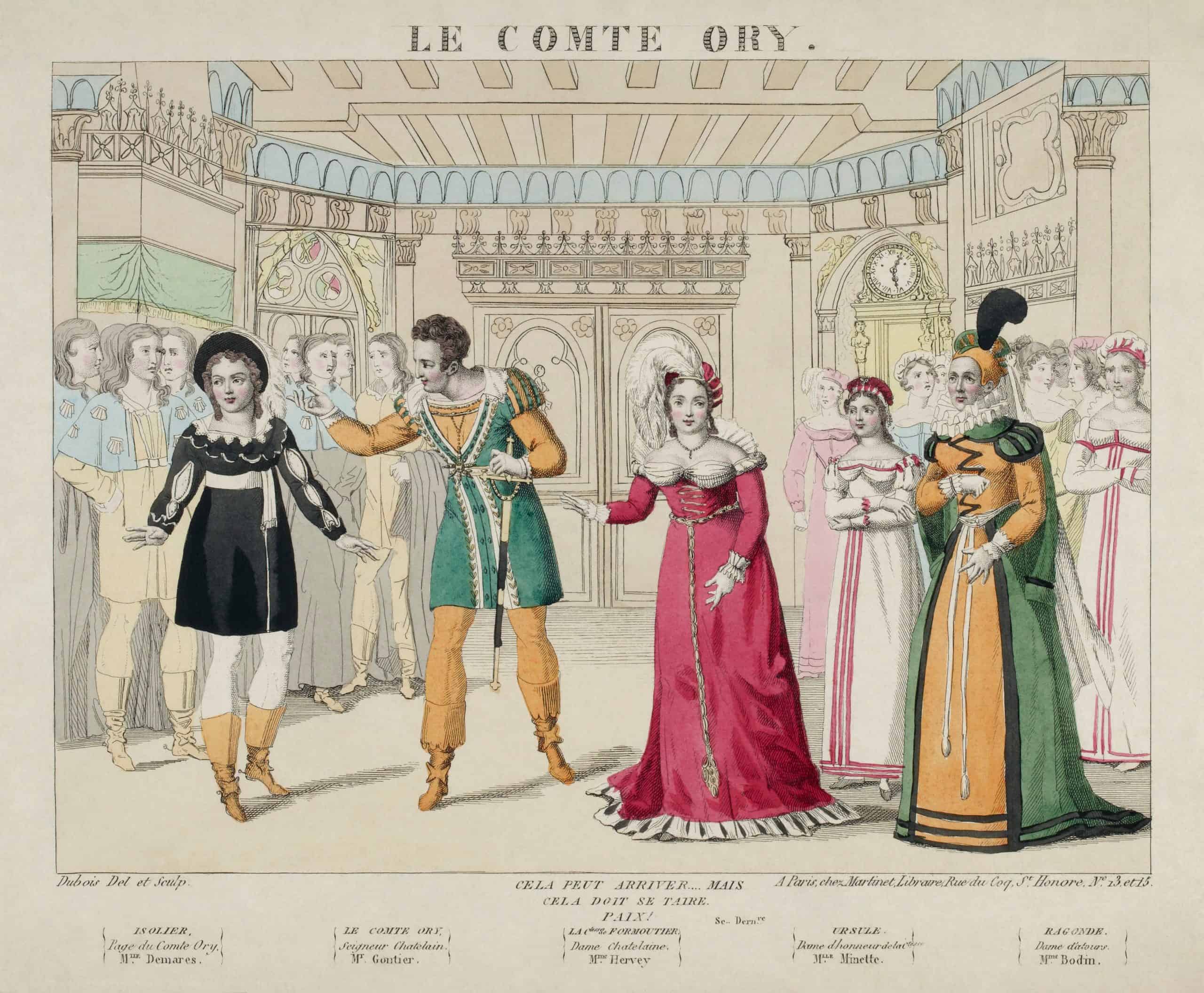
As a company dedicated to crafting world-class opera performances for Aotearoa, we know that our audience is a culturally engaged, artistically-informed and generally very discerning one. But we also know that within our wide, varied artform, even those with a passion for opera may occasionally wish for more insight into what they may see on our stages.
With that context in mind, nau mai haere mai to Stage Notes, a brand new series produced by NZ Opera and designed to prepare and prime our audiences for our mainstage performances. Keep an eye out for upcoming instalments, and we’ll see you at our upcoming season of Le comte Ory!
Gioachino Rossini is a name deeply familiar to opera fans, but even among devotees of the form, his 1828 work Le comte Ory ranks as something of a lesser-known gem. But what makes this particular work so special? How did it earn its reputation? And perhaps most pertinently, why have we at NZ Opera chosen to place it right at the centre of our 2024 programming?
THE COMPOSER OF VORACIOUS HABIT
Though he only truly devoted 19 years to the form, Rossini was highly prolific (and highly successful) during his time as a composer of opera – within the 39 major works he wrote in that period are some of the most beloved and most performed examples in the entire canon.
But while his first work for the Paris Opera was, per The New Kobbe’s Opera Book, “outstandingly successful” with more than 400 performances in the six decades after its 1828 debut, following Rossini’s death in the mid-19th century Le comte Ory – along with many of his other works – soon fell somewhat out of favour.
A COMIC MASTERPIECE (WITH AN UNUSUAL COMPOSITION)
Given that he was composing at a rate of almost two operas each year, it’s probably understandable that Le comte Ory saw both Rossini and the work’s librettists (Eugène Scribe and Charles-Gaspard Delestre-Poirson) dipping into their own archives for inspiration – Rossini repurposing music from his 1825 opera Il viaggio a Reims, and the latter pair lifting from an 1817 vaudeville work.
But even if the creation process was by some measure disjointed, consensus holds that it didn’t noticeably impact on the quality of the work itself.
19th century critic Henry Chorley once famously said of Le comte Ory that “there is not a bad melody, there is not an ugly bar” in the work, while more recently, musicologist Richard Osborne describes Le comte Ory as a “uniquely Rossinian creation with skilfully structured ensembles and a sophistication…that transcends anything to be found in the works of such composers as Auber or Hérold”.
THE COUNT’S BIG COMEBACK
While the early decades of the 20th century saw works like Le cenerentola and Il barbiere di Siviglia (often billed under its English title, The Barber of Seville) rise again in status, it wasn’t until the 1950s that Le comte Ory would receive the same treatment.
It was noted conductor Vittorio Gui who led the charge under his directorship of the prestigious Glyndebourne Opera Festival, first staging the work at the 1954 Edinburgh Festival and then again at Glyndebourne throughout the 1950s.
From there the Count would slowly but surely reclaim his classic status, with the opera bearing his name appearing regularly on European stages over the late 20th and early 21st centuries. Its 2011 premiere at New York’s Metropolitan Opera only saw that status grow further, recorded and screened internationally as part of The Met’s popular cinematic programme.
A NEW LENS TO AN OLD LARK
So that’s the historical context pretty well-covered. But what of our take on this tale? How does NZ Opera plan to make this tale of a perennial chancer, his band of all-too-willing henchmen and a well-heeled lady of leisure – albeit, we should add, one who is certainly no naif – relevant to an Aotearoa audience in 2024? And how have Simon Phillips and Tracy Grant Lord chosen to retool, refit and reshape this story in order to achieve those ends?
We don’t want to give away too much just yet, but we can tell you that while our contemporary take on Le comte Ory retains the bubbling wit and gorgeous bel canto singing of the original, you may find its locale, characters and milieu hit far closer to home than you’d first expected – with nary a continental alpine château or a wimple-clad crusader to be seen!
We’ll continue to dive into the production and creative process behind this exciting new work over the next few weeks, looking into our creative team’s inspiration, revealing behind-the-scenes glimpses as the show takes shape, and finally providing a helpful FAQ in the leadup to opening night.
In the meantime, though, make sure to follow NZ Opera on Instagram and Facebook to ensure you don’t miss a thing in the leadup to this exciting debut.
